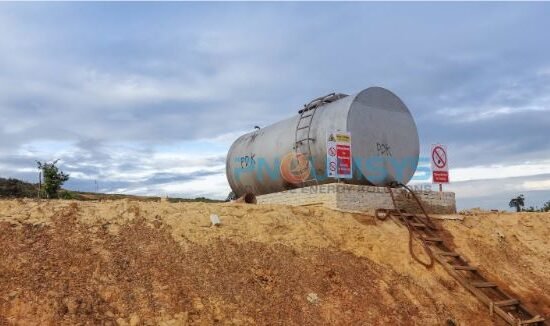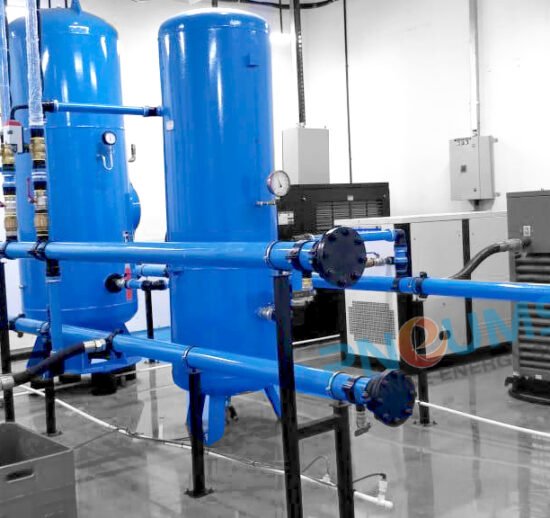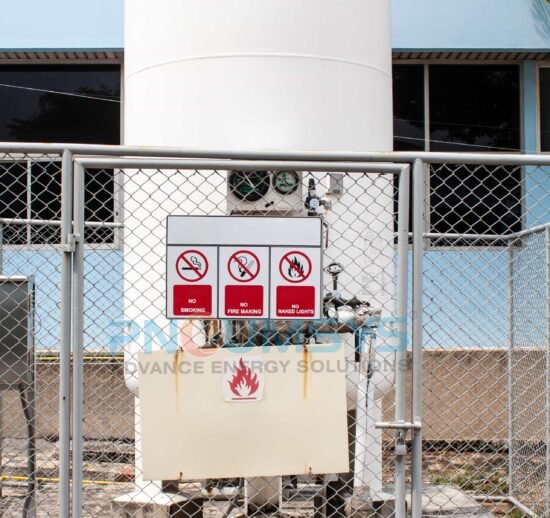To illustrate, offshore zones, onshore oil refineries, processing plants, pipelines, storage farms, and LPG/LNG plants all use or create a variety of dangerous flammable liquids and gases that gas detectors can detect.
As a result, pipelines carrying combustible hydrocarbons such as oil, gasoline, and LNG/LPG (Liquefied Natural/Petroleum Gas), liquid spills, or fugitive gaseous emissions often go undetected, resulting in hazardous concentrations of combustible and toxic gases that endanger equipment, facilities, and personnel.
How Does the Natural Gas Delivery System Work?
Conceptually, The essential idea of the natural gas delivery system is gas flowing from higher to lower pressure. The pressure intensity in a pipeline is measured in pounds per square inch.
Starting from the well, the LPG gas is loaded inside the “gathering” tubes, which are shaped like branches on a tree and become larger as they approach the central collection point. It then travels to the Transmission System, Compressor Stations, and Distribution System. To name a few, the advantages of LPG pipeline systems and installations in factory areas find widespread use.
- The transportation cost, which is significant, is reduced favorably.
- The supply via pipelines is much more reliable. And that provides a clear path for road and rail transportation.
- In the event of any underground pipelines, the land on which the pipeline is laid may still be used for agricultural purposes.
- It also ensures supply in remote areas where roads are poor, as well as safe and secure supply for defense needs.
DESIGN OF LPG VESSELS <
According to industry standards, the design pressure of LPG tanks should not be less than the vapor pressure of the stored product, and the maximum product design temperature should be maintained.
Furthermore, the additional pressure caused by the partial pressure of noncondensable gases in the vapor space, as well as the product’s hydrostatic head at maximum fill, will be taken into account.
Both a minimum and maximum design temperature must be mentioned.
LPG STORAGE VESSELS AND RELATED PIPING SOLUTION
First and foremost, spill control must be considered for all locations. Furthermore, the ground beneath and around an LPG storage vessel must be graded to drain any liquid spills to a safe region away from the vessel and piping.
However, if diking around the vessel is to be used for spill containment, the diked area must meet the requirements.
Similarly, the grading of the area under and around the vessels must guide any liquid leaks or spills to the diked area’s edge.
Furthermore, the grading must have a minimum slope of I%. Grading within the diked area should direct spills away from the vessel and any pipework present within the diked area.
PIPING REQUIREMENTS.
For example, the pipeline structure must be seamless, electric-resistance-welded, or submerged-arc-welded. Seamless pipe of 2 in. or less is required for piping applications.
Furthermore, the number of joints of any kind between the vessel and the first block valve must be kept to a minimum.
The welded joints will subsequently be utilised whenever possible.
Finally, we must ensure that the number of flanged joints is kept to a minimum.
The pressure tube will thereafter be made of steel. If the tube will be exposed to a corrosive environment, stainless steel must be utilized.
FIRE PROTECTION
Specifically, fire protection provisions must be based on a risk assessment of local conditions, exposure from or to other sites, water supply availability, and the effectiveness of fire brigades and fire departments.
REFRIGERATED STORAGE
Specific criteria for refrigerated LPG tanks are addressed here. Also, unless expressly stated otherwise in this part, the rules of prior sections apply to refrigerated storage.
On the one hand, refrigerated LPG tanks must not be positioned within buildings, within spill containment zones of other flammable or combustible liquid storage tanks, or within pressurized storage tank spill containment areas.
The second requirement is that the chilled LPG tanks have spill containment facilities. To prevent flammable material from accumulating under or near a refrigerated LPG tank, the ground beneath and around the tank must be graded to drain any spills to a safe region away from the tank.
THERMAL CONSIDERATIONS
The tank foundation must be built to prevent temperatures of 32°F or lower from reaching the pad and soil for safety reasons. This restriction must be met through ventilation, insulation, heating systems, or a combination of these.





